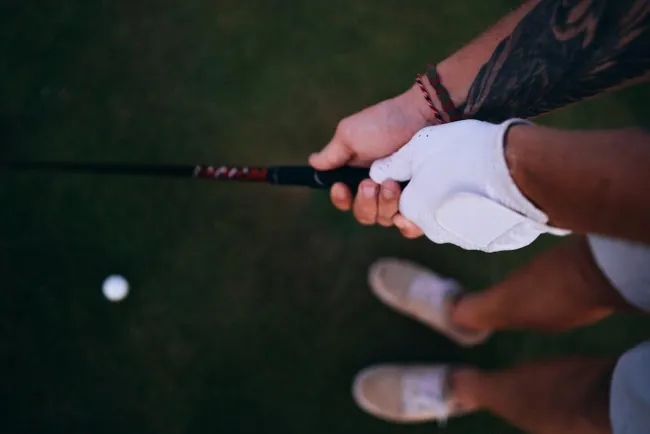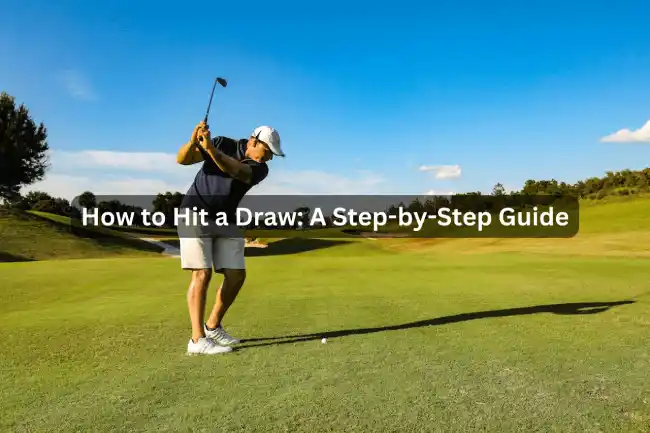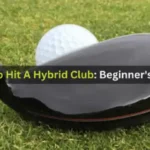To become proficient in golf, mastering the technique of hitting a draw shot is essential for every golfer. A draw shot is a type of shot that curves gently from the right to the left for a right-handed player (opposite for a left-handed player).
It is a valuable skill that can help you navigate obstacles on the golf course and gain more control over your shots. In this guide, we will delve into the step-by-step process of how to hit a draw in golf.
Understanding the Draw Shot
Before diving into the specifics of how to hit a draw shot, it’s crucial to understand the principles behind this type of shot. A draw shot is achieved when the golf ball initially travels slightly to the right of the target before curving back in the air to the left, landing closer to the intended target. This curvature is a result of the golf ball spinning from right to left (for right-handed players).
Step 1: Proper Stance and Alignment

The first step in executing a draw shot is to ensure the correct stance and alignment. Position yourself so that your feet, hips, and shoulders are slightly aligned to the right of your target (for right-handed players). This alignment sets the foundation for the inside-out swing path required to hit a draw.
Step 2: Adjust Your Grip

To facilitate a draw shot, you may need to make slight adjustments to your grip. Rotate your hands slightly to the right on the grip of the club (clockwise for right-handed players). A stronger grip can help promote a more closed clubface at impact, encouraging the desired draw spin on the ball.
Step 3: Swing Path and Clubface Position

The key to hitting a draw shot lies in the swing path and clubface position at impact. Focus on swinging the club from inside to out along the target line. This inside-out swing path, combined with a slightly closed clubface, imparts the necessary side spin for the ball to draw.
Step 4: Weight Transfer and Body Rotation

During the swing, ensure a smooth weight transfer from your back foot to your front foot as you rotate your body through the shot. Engage your core muscles and allow your hips to lead the downswing, promoting the desired inside-out path and helping generate the necessary power for the draw shot.
Step 5: Follow Through and Finish

As you swing through the ball, maintain a smooth and balanced follow-through. Allow the club to release naturally, completing the swing with your arms fully extended and the club high. A proper finish is crucial for maximizing the draw spin on the ball.
Step 6: Practice and Patience
Mastering the draw shot takes practice and patience. Spend time on the driving range honing your technique and gradually incorporating the steps outlined above into your swing. With dedication and repetition, hitting a draw shot will become a valuable skill in your golfing arsenal.
Common Mistakes to Avoid When Trying to Hit a Draw
When attempting to hit a draw in golf, many players encounter common mistakes that hinder their ability to achieve the desired shot shape. Understanding these errors and knowing how to troubleshoot them can greatly improve your chances of successfully hitting a draw. Let’s explore some of the most prevalent mistakes and how to overcome them.
Grip and Setup
One of the key aspects of hitting a draw is the grip and setup. A common mistake is having a grip that is too weak, meaning both hands are rotated too far to the left on the club. This can make it challenging to release the club properly through impact, resulting in a straight or even a slice shot.
To remedy this, ensure that your grip is neutral or slightly strong, with the “V” formed by your thumb and forefinger pointing towards your trail shoulder. Additionally, pay attention to your setup by aligning your body slightly to the right of the target (for right-handed golfers), which promotes an inside-out swing path conducive to hitting a draw.
Swing Path and Clubface Alignment
Another frequent mistake is an out-to-in swing path and an open clubface at impact. This combination often leads to a slice rather than a draw. To correct this, focus on swinging the club from inside to outside along the target line while ensuring that the clubface is square to slightly closed at impact.
Practice drills such as placing alignment rods on the ground to guide your swing path or using impact stickers on the clubface to monitor your clubface angle at impact. These visual aids can help you ingrain the correct movements for hitting a draw effectively.
Weight Distribution and Timing
Poor weight distribution and mistimed release can also contribute to failed attempts at hitting a draw. If your weight remains on your front foot throughout the swing or if you release the club too early, you may struggle to generate the proper clubhead speed and the desired right-to-left ball flight.
Work on shifting your weight smoothly from your trail foot to your lead foot during the downswing, allowing your body to rotate through impact fully. Practice drills like the “pump drill,” where you pause at the top of your backswing before initiating the downswing, can help improve your weight transfer and timing for hitting a draw.
Practice and Patience
Hitting a draw requires practice and patience. It’s essential to dedicate time to working on the specific aspects of your swing that contribute to this shot shape. Whether it’s adjusting your grip, fine-tuning your swing path, or refining your timing, consistent effort and a positive mindset are key to mastering the draw shot.
FAQS
Q: Why is a draw considered beneficial in golf?
A: A draw is favored because it typically travels further due to less backspin, is less affected by the wind, and can be more consistent in its flight path towards the target, especially useful in avoiding mis-hits.
Q: What are the key differences between hitting a draw with a driver vs. irons?
A: While the principles remain largely the same, a draw with a driver may require a slightly different alignment and ball positioning due to the longer length and lower loft compared to irons. The setup for a draw with irons might involve a more pronounced in-to-out swing path and a stronger grip to ensure the clubface is adequately closed at impact
Q: What are the key steps to hitting a draw?
A: key steps to hitting a draw:
- Setup: Stand with your feet, hips, and shoulders aligned slightly right of the target (for right-handers).
- Grip: Strengthen your grip by turning your hands slightly to the right on the club handle.
- Swing Path: Swing the club back inside the target line and follow through along the same path.
- Club Face: Ensure the club face is closed relative to the swing path at impact but slightly open to the target line.
Q: Where should I aim when trying to hit a draw?
A: When aiming to hit a draw, you should aim slightly right of your target if you’re a right-handed golfer (and vice versa for left-handed golfers). This allows the natural curvature of the draw to bring the ball back towards the target.
Q: How does grip affect the ability to hit a draw?
A: A stronger grip can help in promoting a draw. This means rotating your top hand (right hand for right-handed golfers) more underneath the club, which can encourage the club face to close at impact, essential for creating the draw spin.







